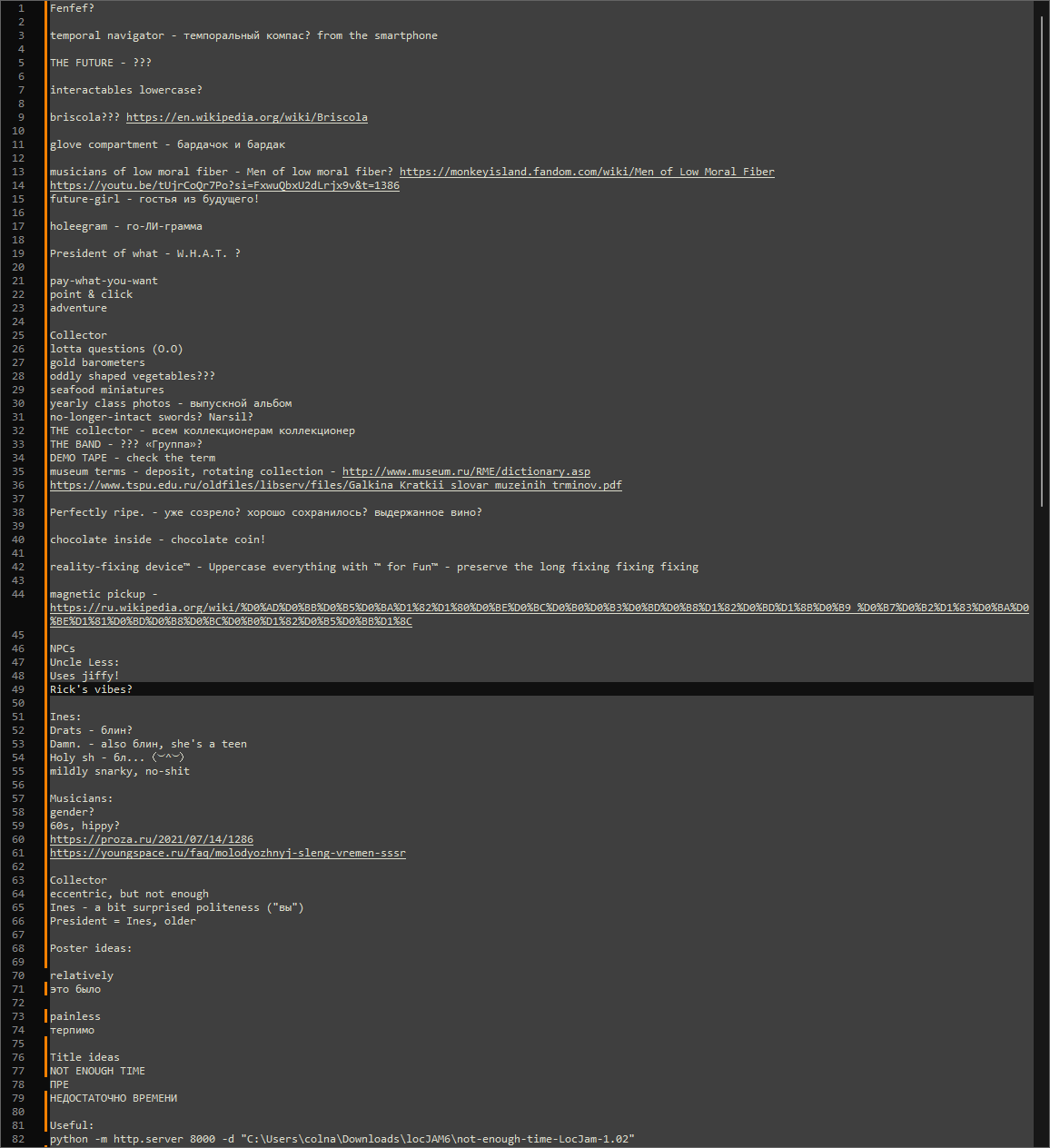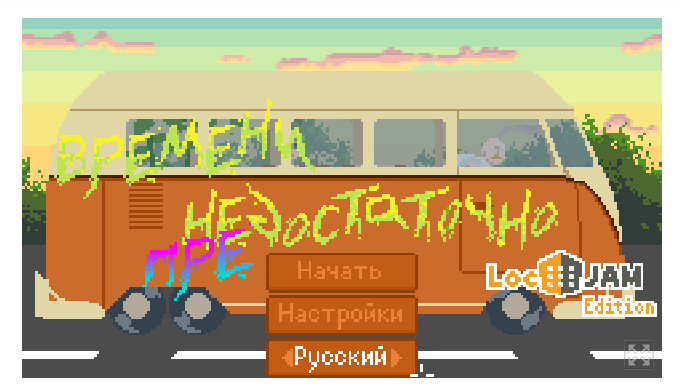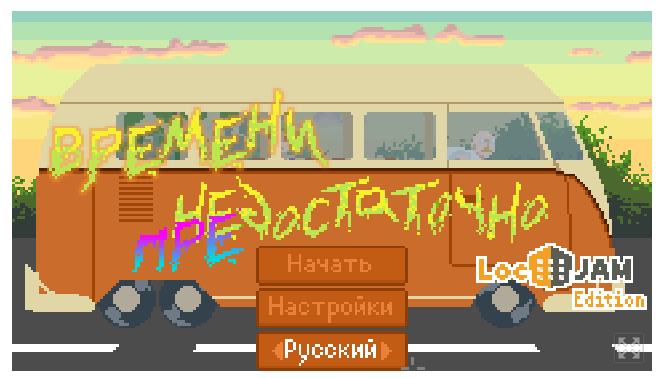As far as I know, it's more about coding the video player with compatibility in mind 😅
For example: https://developer.mozilla.org/en-US/docs/Web/Media/Audio_and_video_delivery/cros...
As far as I know, it's more about coding the video player with compatibility in mind 😅
For example: https://developer.mozilla.org/en-US/docs/Web/Media/Audio_and_video_delivery/cros...
If it helps, I tried to launch your project from my smartphone and it works (mobile Google Chrome)!
I think it is a browser compatibility issue. Technically, you can try to make the video play in all browsers, but it's actually more of a technical work, not the localization, and it could be challenging.
Hello,
I just checked: the usual browser didn't catch the modified subtitles, but when I created the draft project and uploaded the archive there (with the modified index.html and modified night_of_the_living_dead.vtt files inside), the player on the project page shows the correct modified subtitles.

To edit the index file you can use any text editor (I used Notepad++), the subtitles file is highlighted on the screenshot:

So it could be the in-browser viewing issue.
И слог, и оформление прекрасны. Бесспорно, одна из лучших работ.
Единственное, что меня смутило, — обложка (практически уверена, что сгенерирована ИИ) и несуществующий сайт https://i.pinimg.com/ в источниках. Если убрать i, это, конечно, один из доменов Pinterest'a, что так себе в качестве ссылки.
Прочитав в описании «перевод детективной юмористической онлайн игры», я ожидала в архиве, собственно, игру, эх.
Поскольку я такой же участник, обычно не оставляю именно критические заметки, а предпочитаю найти и указать элементы, которые мне лично понравились. Увы, здесь не могу выделить что-то эдакое; если команда принимает критические комментарии, я могу написать основные моменты в переводе, на которые точно надо обращать внимание при работе.
I don't have any hands-on experience Mac, but I found this: https://support.apple.com/guide/textedit/work-with-html-documents-txted0b6cd61/m...
INTRO
How many times will these not-enough-time puns be used during (and after) this LocJAM? Don't ask me—I'll keep using them!
Note: I didn't transfer the text to a CAT (and Back Again), mainly because the project is small. Also, I have about zero experience in creating and setting up CAT projects, having only worked there as a translator and/or LQA tester. Maybe if I had enough time (😏), it would be worth a try, but alas.
So everything below is about a completely non-automated approach—and more about THE approach than the tools. But it's better to work with CATs, yes, and more useful in terms of professional skills. Also, in some cases, I wrote about pretty obvious things—at least for the seasoned translators. I think it can be useful for someone new to all this!
And this post-mortem is about how I handled this jam, alone, using my knowledge as an industry worker and general localization enthusiast.
GETTING READY
What I did at first was to play in English from start to finish, interacting with everything I could think of. That's a great way to get familiar with the game, but it's not always possible for larger projects. Most of the time, it's not possible at all. Sometimes the game isn't ready, and sometimes the client didn't even think about it and wanted everything done yesterday, etc., etc.
At the same time, I jotted down any moments that seemed suspicious, unobvious, and in need of attention. Or pun ideas. For example, the strange name for the musicians (of low moral fiber), or the glove compartment with the description about gloves (I immediately thought about the obvious localization: бардачок, which is a direct translation of this compartment in Russian, and бардак, which is a mess, and could be applied to this!). I also jotted down the changing poster and its text. And one of Uncle Lee's ending lines about "enough time," which I thought would fit well with my title localization.
I also wrote down the names of the NPCs and their brief characteristics. This helped me choose or correct the style of their lines. For instance, Ines is a skeptical teen, Uncle Lee is eccentric and on good terms with Ines, the musicians are hippies from the '60s, the president is like Ines but older, the collector is also eccentric and Ines refers to her politely out of a bit of a surprise.
I screenshotted my notes!

TRANSLATION PROCESS
As the project isn't too big, I used Notepad++ and Visual Studio, both of which have all the features I needed: identical text fragment selection, line numbering, line markers, and a comfortable search.
The first step in every translation project, regardless of its jam-iness, is creating a term base. I went through all the lines and created a separate page with all term-like words and word combinations. I also added some useful notes, like the collector's gender. Then I translated all these terms. Just a heads-up for any translators and/or editors: these translations are initial (even if you played the game previously and are more or less familiar with everything). Because some context or other situations (like the line length) could make you change all of these eventually.
My second step was the translation itself. Ideally, the lines would be provided as they appear in the game, with clear connections, context, and such. In our text_translated.lua file, the lines were more or less in contextual groups, but a bit scattered chronologically (hehe). But it was still possible to work by dialog blocks.
I translated the interface, which was the smallest part. I also started a new walkthrough to go along with the translation process, so I could check the lines almost simultaneously. Unfortunately, this approach isn't feasible most of the time.
When it comes to translating dialogue, it's important to keep the flow going. That is, to make sure that one line is neatly followed by the next one. Like in any real conversation! Some wise folks could suggest that you read your translation aloud to check how it will sound. If you have the time and your workspace allows, do it. Also, a character should have a consistent style. For instance, Ines shouldn't suddenly start to communicate like a British aristocrat, and the musicians from the 60s—like some bureaucrats.
Again, ideally, creators, designers, and other knowledgeable people would leave comments for lines with references. This is sometimes done, but not very often or consistently within one project. More often, there is some kind of a Q&A file where translators can ask. And it's not uncommon to not get many answers or any answers at all. So, in any case, google everything! Also, don't be afraid to tap into the collective knowledge of your colleagues and friends. Another heads-up: remember to be mindful of any NDAs.
As you can see in the screenshot above, I have a whole bunch of ? and ??? there. I thought about starting a thread with these questions but decided not to. Mostly because waiting for answers would have stalled my progress, and I didn't have much free time. And I could lose inspiration and not get back to the project. Oh well. I'd advise you not to be me, of course! But it's better to be you and decide for yourself. The good news is that this jam is very comfortable pressure-wise. There's no competition, no evil reviewers or critics.
When I'm working in a team, I often leave comments with some references for other translators or testers (or write about these things in the project communication channels). It's always good to check with everyone involved and make sure there are no potentially lost references.
It's also important to remember that it's not easy to write a balanced conversation without using overly clumsy phrases that no one uses, and not to slip into excessive illiteracy. Even for experienced translators. Mostly because we don't talk while translating, and some phrases in our minds don't go neatly and without changes in the spoken words. So my main goal was not to go overboard with flowery words where there is no need for them!
As I mentioned before, I tried to note all the suspicious phrases during my first walkthrough. So, during the actual translation process, I paid extra attention to what I might miss, like puns, idioms, wordplay, humor, and so on. In my opinion, you need to be well-read in both the target language and the source language to be able to spot any "suspicious" turns of phrase. It's always good to have a "check anything out of the ordinary" attitude in general.
Humor, jokes, and wordplay are some of the trickiest parts of localization. They often need to be adapted to the target language in a way that suits the style of the project.
Just a quick example for our Russian-speaking readers—here's an unofficial Russian translation of some jokes from The Elder Scrolls Online.
Another VERY IMPORTANT thing to think about is consistency. And it's not just about sticking to the chosen terms, but also about formatting. In this project, for example, I used this approach for the credits. Since translating names and surnames isn't a very fun idea, I decided to keep them as they are. And for consistency, I also wrote my name similarly.
A more abstract example would be settings. For Russian, it would be better to use either action verbs (Switch—Переключить, Change—Изменить) or nouns (Switch—Переключение, Change—Изменение). The result is mostly the same, but it looks nicer.
Possibly controversial but important topic: cultural adaptation. I'm not the right person to discuss things like "translators should translate as it is" or anything else from Twitter. But some things can be very far removed from the audience and/or just don't have a literal translation. This is not the case with Not Enough Time, but I took the liberty of adding a little flair for the musicians. American slang from the '60s doesn't really translate well literally – and the phrases would be a bit bland for any semi-literal translation. So I used some words from the Russian slang of the same period! It's important to remember moderation, though.
ADDITIONAL THINGS
Anything can fall into this category: new fonts, images, and some code tricks. We were free even to add something to the gameplay! If you browse a few submissions, you will see lots of these things! In my case, I am not a game designer and it is not easy for me to grasp the code logic, sadly, so I decided to go just with the poster and title localization.
I mentioned in the beginning that one of last Uncle Lee's lines was about "enough time". So, Not Enough Time—«Недостаточно времени», removing Not, and voila, «Предостаточно времени». I'm pretty proud of this idea!
As for the actual art... Well, I'm not very good at it either. However, I was able to carefully remake Latin characters and drag and rotate them to make Cyrillic. I used a free Photoshop-like tool I found online. I checked it again in the game, and in the second iteration I moved everything up a bit and added an outline for readability.


The poster localization took a few turns. First I translated Ines' comment about the song more literally—and then I realized that it would not fit on the poster. So I had to redo it—luckily our musicians are pretty rebellious (that's why they're called THE BAND), so the album's strange name is quite appropriate. And this new, shorter version fits! Although I made the left side a bit wider anyway, since my letters are wider.

I should also take a little more time to think about this image and make the transparent part smaller—to avoid this poster bug. But I didn't. I'll think about fixing it after the voting is over (and also after my upcoming vacation, hehe).
What I didn't do, but thought about? Fonts. Pixel fonts can be hard to read. In our case, the Cyrillic font was pretty good, and you get used to it. And I looked up the process of changing fonts (find the font, convert it, think of some special strokes), sensibly estimated my jam stamina, and shelved the thought.
Still, it's worth noting that the Cyrillic fonts in many games are terrible. It is often just generic Arial (at best), or some ugly modification of a Latin one, with 6 instead of б and horrendous spacing (п р и м е р н о т а к о й). So, if you can warn the client about this issue while doing your job—please do. Even better, if you can recommend the better free option (similar in style)—or if you can make one! Yes, this is extra work. But localization is not only about the text, it is also about its appearance and readability!
LQA
From the sad stuff to the end! Spell check and LQA, my favorite. Because that's what I am. (Well, I am a QA specialist in the most broadest sense, but I like LQA the most!)
In the case of this little game, I used Language Tool for spell checking. You can use anything for this, including built-in CAT things or even Microsoft Word's F7. Just remember to be careful with the online tools, as they are now more and more likely to use your input for some machine learning projects. Also, keep in mind that the quality of these checkers varies from language to language, and in general any such service will miss something. Even the obvious mistakes.
So, to the LQA—localization quality assurance! Because of course you want to be sure that your localization is good, right? Eh, if only every game dev thought about that. But this is LocJam, and I decided what to do with my localization, so LQA it is! I played the game twice, with a little break (as in a "day-long break") to clear my perception. I took screenshots and notes. It helps with the obvious things like overflow, overlaps, truncations, typos, and even sloppy writing.
EVEN MORE ADDITIONAL THINGS
It was nice to decorate the submission page a bit! I really liked this Spanish submission, and even though I couldn't do the font thing, I gave it a try. And, well, copied the style of the original game, using the Page Source browser tool for images, color codes, and game window sizes. And localized the description!
I also made an icon for the size requirements of the site. Basically, I took a screenshot of the main menu, resized it, cropped it, and colored some parts.
Oh, and I also translated the walkthrough! This part is super optional, I just rode my inspiration wave. The main thing was not to forget about consistency, which I did. Because I did it at three in the morning and there was one typo and one wrong term. Don't be like me.
After (and at the same time as) all this, I sent my link to my friends! Seriously, do it. Especially if some of your friends are also work in game dev. A fresh point of view, free testing, you know the drill 🌚 My friends are also my colleagues—translators and testers. If they are reading this—thanks again, you are cool!~
A-and your friends will praise you, too. That's nice. And important! No kidding.
CONCLUSION
I've reread these six pages of my "post-mortem" and, to be fair, it feels less like an analysis and more like a rambling. Perhaps I should have given more specific examples of my thought process instead of limiting myself to a screenshot of my notes.
But I hope that even in this form, someone found it interesting—or even useful!—to read. And I'd be happy to discuss some cases in the comments.
And I still have 31 games to play. Oh well.
USEFUL THINGS
Russian-specific things:
Oh, and I am also very thankful for the LocJAM orgs. I had a blast participating in my very first jam!